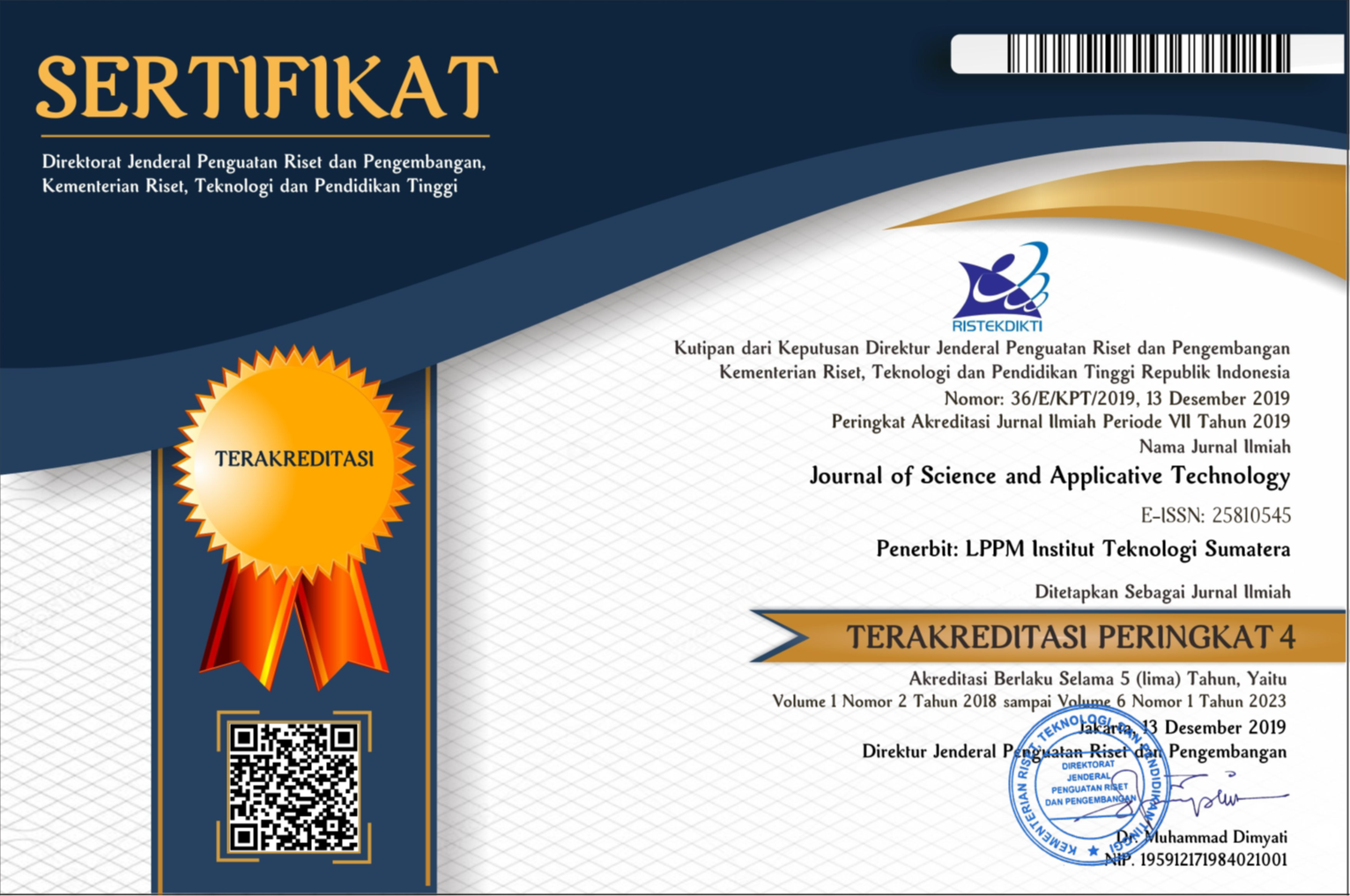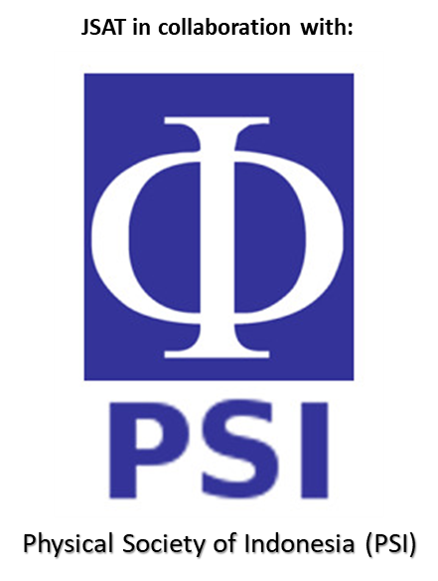The Electrolyte-Fuel Concentrations Effects on Direct Methanol Alkaline Fuel Cell (DMAFC) Through Non-Noble Metal Catalysts
Abstract
Most of the R&D on Direct Methanol Alkaline Fuel Cell (DMAFC) concentrates on electrode catalyst and appropriate electrolyte to improve the efficiency. Mostly, a Pt-based electrocatalyst was used. In this research, Nickel foam and membrane silver as non-noble metal catalysts were used in a square-shaped fuel cell stack of 15 x 15 cm in size. The ionic current in the Direct Methanol Alkaline Fuel Cell (DMAFC) was due to the conduction of hydroxide ions. Potassium hydroxide which plays an essential role in delivering hydroxide ions was used in this study. The electrolyte effect of potassium hydroxide was studied in different concentrations for the methanol oxidation reaction. Nickel foam and membrane silver were used for methanol oxidation reaction (MOR) and oxygen reduction reaction (ORR). 1 M, 3 M, 5 M concentration of potassium hydroxide and 0.5 M, 1 M, 2 M, 3 M, 4 M, 5 M of methanol as a fuel have been conducted. The highest maximum power density of 543.35 mW/cm2 was obtained at 2,331 mA/cm2 of current density using the 5 M KOH and 0,5 M fuel. At equimolar concentration between fuel-electrolyte mixture give the higher current density.
Downloads
References
[2] Gregor Hoogers Fuel Cell Technology Handbook, CRC Press, 2003.
[3] Kamarudin SK, Achmad F, Daud WRW, “Overview on the application of direct methanol fuel cell (DMFC) for portable electronic devices†Int J Hydrog Energy vol. 34, pp. 6902–6916, 2009.
[4] Zhao, X. et al, “Recent advances in catalysts for direct methanol fuel cellsâ€, Energy Environ Sci. vol. 4, pp. 2736–2753, 2011.
[5] Gao, M. R. et al, “A methanol-tolerant Pt/CoSe2 nanobelt cathode catalyst for direct methanol fuel cellsâ€, Angew Chem Int Ed. vol. 50, pp.4905–4908, 2011.
[6] Wen, Z., Liu, J. & Li, J, “Core/shell Pt/C nanoparticles embedded in mesoporous carbon as a methanol-tolerant cathode catalystin direct methanol fuel cellsâ€, Adv Mater vol. 20, pp. 743–747, 2008.
[7] Koenigsmann, C., Wong, S. S, “One-dimensional noble metal electrocatalysts: A promising structural paradigm for directmethanol fuel cellsâ€, Energy Environ Sci. vol. 4, pp. 1161–1176, 2011.
[8] Zhao TS, Yang WW, Chen R, Wu QX, “Towards operating direct methanol fuel cells with highly concentrated fuelâ€. J Power Sourcesvol. 195, pp. 3451–3462, 2010.
[9] Kumar JA, Kalyani P, Saravanan R, “Studies on PEM fuel cells using various alcohols for low power applicationsâ€, Int J Electrochem Sci vol. 3, pp.961–969, 2008.
[10] Kim J, Momma T, Osaka T, “Cell performance of Pd–Sn catalyst in passive direct methanol alkaline fuel cell using anion exchange membraneâ€, J Power Sources vol. 189, pp. 999–1002, 2009.
[11] Chen Y, Zhuang L, Lu J, “Non-Pt anode catalysts for alkaline direct alcohol fuel cellsâ€, Chin J Catalvol. 28, pp. 870–874, 2007.
[12] Bockris JO, Conway BE, White RE, “Modern aspects of electrochemistryâ€, Plenum Press, New York, 2001.
[13] O.P. Sahu & S. Basu, “Direct alcohol alkaline fuel cell as future prospectusâ€, New Delhi, India. Advanced energy: an International Journal (AEIJ) vol.1 No.1, 2014.
[14] A. Verma, A.K. Jha, S. Basu, “Manganese dioxide as a cathode catalyst for a direct alcohol or sodium borohydride fuel cell witha flowing alkaline electrolyteâ€, Journal of Power Sources 2004.
[15] A. Verma & S. Basu, â€Direct use of alcohols and sodium borohydride as fuel in an alkaline fuel cell†Journal of Power Sources vol. 145, pp.282–285, 2005.
[16] Antolini & Gonzales, “A novel cathode for alkaline fuel cells based on a porous silver membrane†2010.
[17] M. Cifrain, K.V. Kordesch, W. Vielstich, A. Lamm, H. Gasteiger (Eds.), Handbook of Fuel Cells, vol. 1, John Wiley, p. 267, 2003.
[18] Yan Wang et al, “Methanol electrooxidation reaction in alkaline medium on Glassy Carbon electrode modified with ordered mesoporous Ni/Al2O3â€, 2017.
[19] J.M. Skowronski, A. Wazny, “Nickel foam-based composite electrodes for electrooxidation of methanolâ€, J Solid State Electrochem vol. 9,pp. 890-899, 2005.
[20] Xian Zhu Fu et al, “Surface modified Ni foam as current collector for syngas SOFC with perovskite anode catalystâ€, International Journal of H2 energy vol. 35, pp. 11180 – 11187, 2010.
Copyright (c) 2021 Journal of Science and Applicative Technology

This work is licensed under a Creative Commons Attribution-NonCommercial 4.0 International License.
All the content on Journal of Science and Applicative Technology (JSAT) may be used under the terms of the Creative Commons Attribution-NonCommercial 4.0 International License.
You are free to:
- Share - copy and redistribute the material in any medium or format
- Adapt - remix, transform, and build upon the material
Under the following terms:
- Attribution - You must give appropriate credit, provide a link to the license, and indicate if changes were made. You may do so in any reasonable manner, but not in any way that suggests the licensor endorses you or your use.
- NonCommercial - You may not use the material for commercial purposes.
- No additional restrictions - You may not apply legal terms or technological measures that legally restrict others from doing anything the license permits.





















